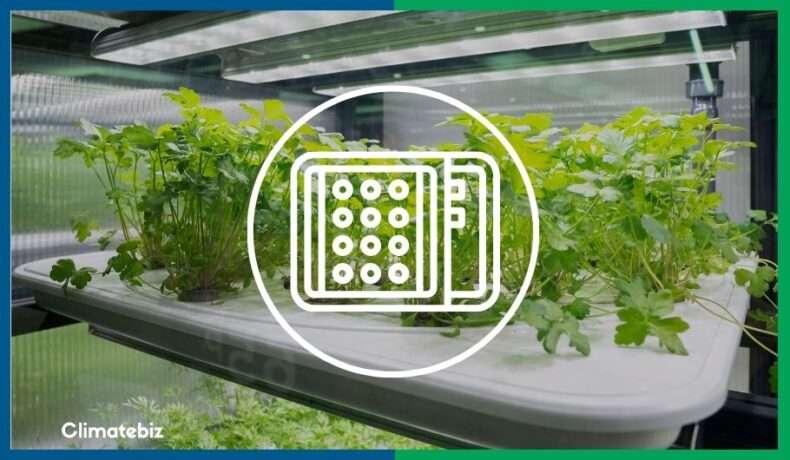“I’ve been thinking about buying a 1000 watt LED grow light for my plants but in all honesty, I don’t know where to begin. I feel so confused“
If you’ve landed on this article, chances are you’ve had this thought at least once over the past while, and for good reason.
There’s a lot that goes into buying quality lighting for your grow setup. Factors like budget, electricity usage, the needs of your plants, and your spacing requirements all come to mind. Never mind the light itself.
There’s an overwhelming amount of information out there and very little time in the day to navigate it all.
Fortunately enough, you have us to rely on – we’re more than happy to get our hands dirty and do the work for you!
In this article, we’ll provide you with insight into the most important aspects of a 1000 watt LED grow light.
Enjoy!
Table of Contents
Is A 1000 Watt LED Grow Light Right For You?
This question can only be answered on a case-by-case basis. First, you’d need to establish your:
- Grow light budget
- Electricity usage and budget (check out our guide to 10 Energy Efficient Indoor Grow Lights For Plants)
- Grow space size
- The type of plants you’ll be growing
Once you’ve gathered that information, you can determine whether or not a 1000W LED grow light is appropriate for your setup.
Fortunately enough, the sections to come will assist you with this process.
How Much Does A 1000 Watt LED Grow Light Cost?
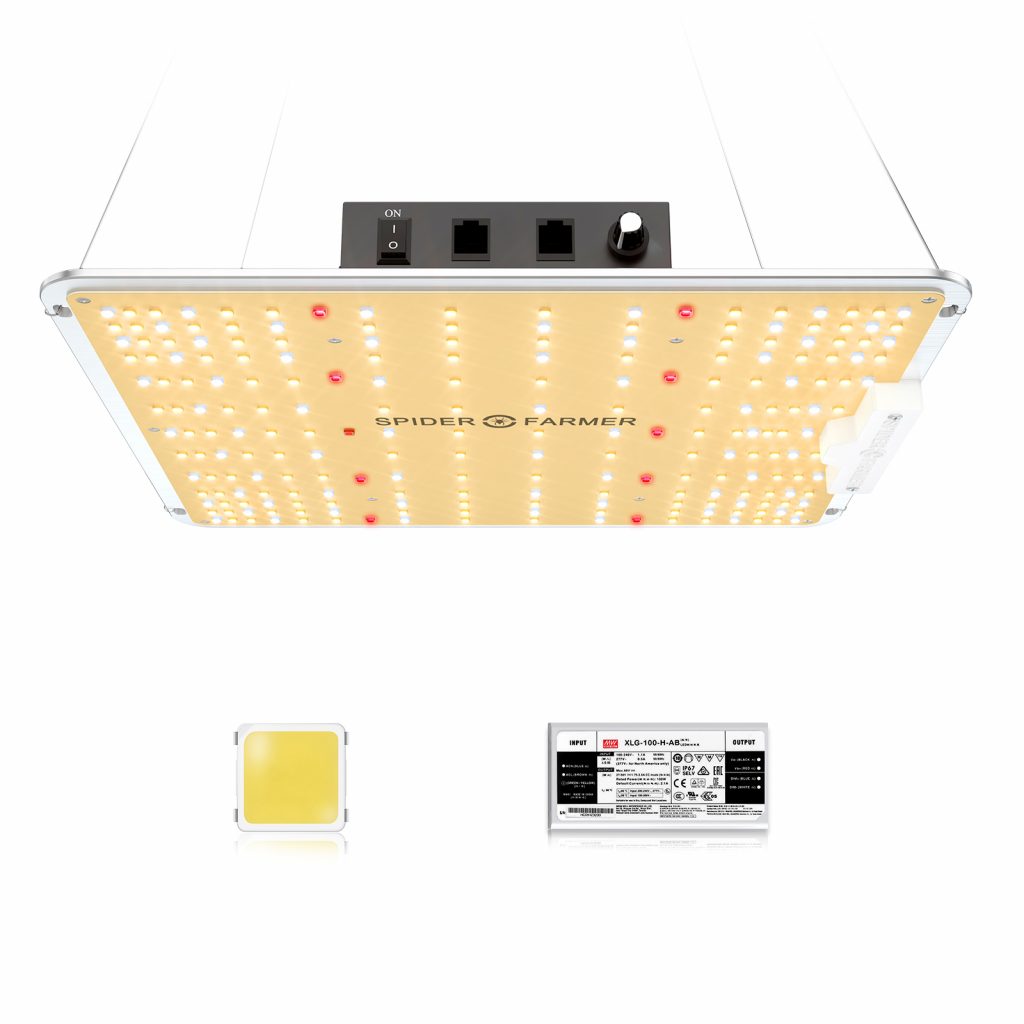
View On Amazon
In order for us to give you the most accurate answer possible, we looked at the price of over 40 different LED grow lights. Here’s what we found:
Price Range
The price for a 1000 watt LED grow light ranges from $39.99 (Dimgogo grow light) to $1,599.99 (California Lightworks SolarSystem 1100). Keep in mind that these are price extremes.
Average Price
The average price for a 1000 watt LED grow light is $76.69.
How Much Does It Cost To Run A 1000 Watt LED Grow Light?
To answer this question, we’ll use the following variables:
- 1000 watt LED grow light
- 18 hour days (veg cycle)
- 30-day period
- 14.21 cents per kWh – According to the U.S. Energy Information Administration, this is the average price that residential consumers are paying for electricity (as of November 2021)
Calculation Time
- Divide the wattage by 1,000 to calculate kW: 1000 watts/1,000 = 1 kW
- Multiply the kilowatts by the hours of daily use: 1 kW X 18 hours = 18 kWh per day
- Find the total energy usage for a month (30 days): 18 kWh X 30 days = 540 kWh per month
- Multiple the kWh by the price of electricity: 540 kWh X 0.1412 = $76,24
The Answer
A 1000 watt Led grow light, running 18 hours a day over a 30-day period at a cost of 14.21 cents per kWh will set you back $76,24.
How Much Area Does A 1000 Watt LED Grow Light Cover?
A 1000 watt LED grow light tends to cover an area of about 5 x 5 ft (25 ft2)
However, that answer oversimplifies things a tad.
You see, not all grow lights are created equal – some are more efficient than others. In other words, you’ll have two different “1000 watt” grow lights that actually output different levels of light.
The Issue With Wattage And Grow Lights
Lighting brands put a lot of emphasis on the wattage of their lights, often making false claims while they’re at it. As such, consumers often see this spec as the be-all and end-all of lighting.
This presents two issues:
1 – Wattage Measures Power, Not Light
Essentially, when you turn a diode on, it gives off light, not wattage. So when you’re looking to purchase your 1000 watt LED grow light, you want to focus on its output (measured in umol/s, or sometimes lumen) relative to its input (wattage).
2 – Insufficient Information
“Looking to size the lighting for your grow space? All you need to do is calculate the watt requirement per ft2 of plants” – a fair few informational sources out there.
While that information can be somewhat helpful, it isn’t entirely accurate because (again) wattage isn’t a measurement of light. What’s more, there are other important factors that play a role, such as:
- Light spread
- Presence of natural light
- The amount of light the plants require
Light Spread
Light spread plays a vital role relative to the amount of area that a 1000 watt LED grow light can cover (or any light for that matter).
A quality LED will spread its output more evenly throughout an area, while a less effective light will concentrate it over a smaller area.
How Do You Determine Light Coverage And Output?
Manufacturers often provide output data in the form of PPFD. However, many of them only provide data that indicates output directly beneath the light. They neglect to add a PPFD footprint.
What Is A PPFD Footprint?
A PPFD footprint shows light output at various points throughout a lights coverage area. This allows you to see how a light fixture performs over an entire area as opposed to a specific spot.
This begs the question, what does a good PPFD footprint look like?
PPFD Chart Comparison
First, let’s look at a PPFD footprint that indicates a light with good light coverage:
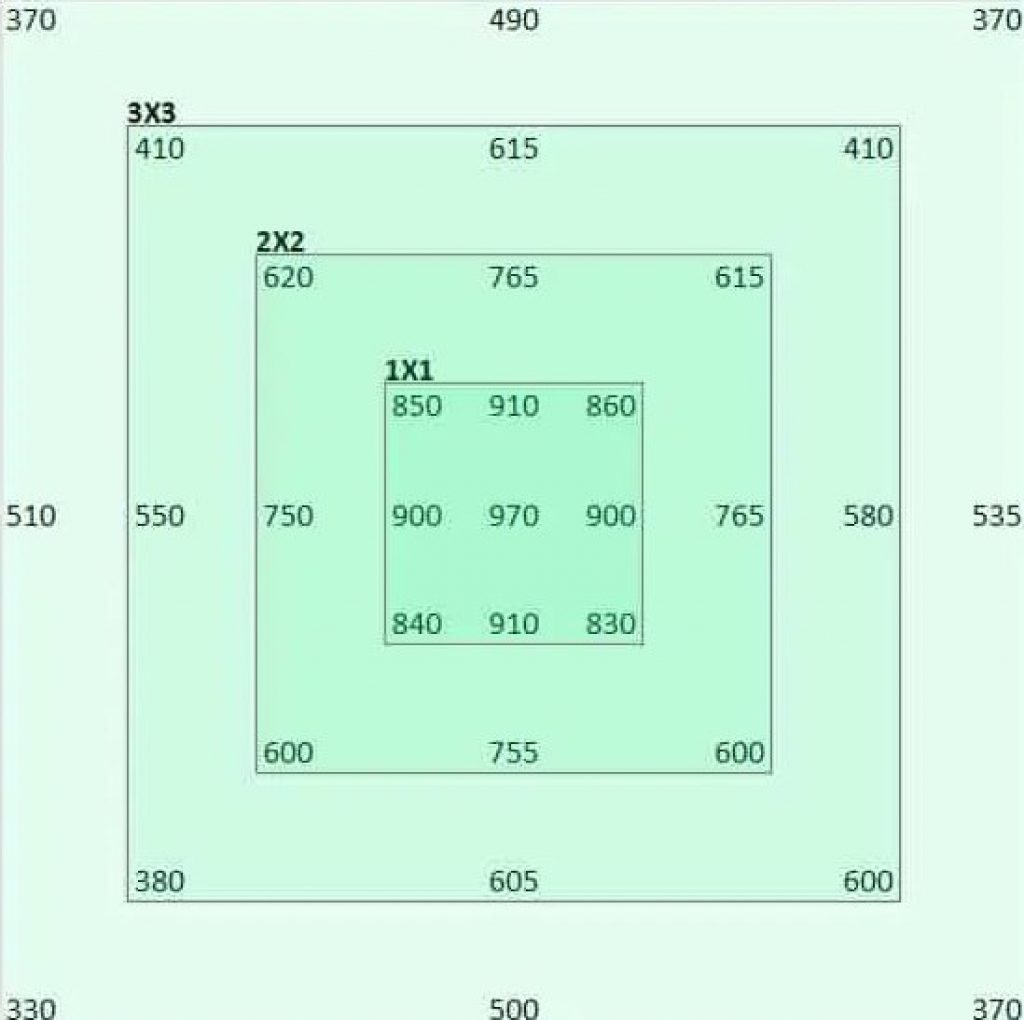
Notice how the numbers around the outside and in the center of the footprint are closer to each other. Readings in the center will always be higher, but on poor lights, the center values are huge and those around the outside will be very low.
Now let’s look at a PFFD footprint that indicates poor light coverage:
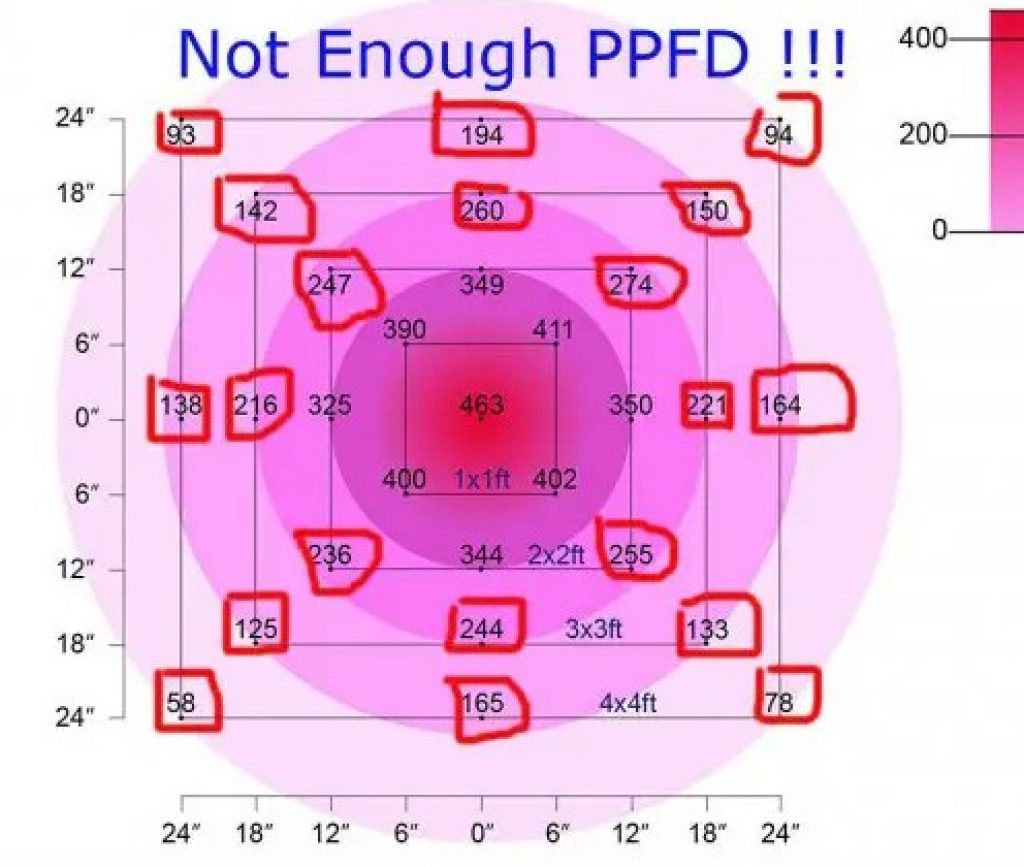
The discrepancy in the values is far greater in this image. It is therefore easy to see that the light in question has a poor light spread.
The Presence Of Natural Light
The more natural light you have throughout your grow space; the less light you’ll require from your 1000 watt LED grow light. You can adjust the height of your fixture to increase the coverage area.
The Amount Of Light The Plants Require
Different plants and their accompanying growth stages require different amounts of light. For instance, a hydroponic setup with basil would need more light than one with thyme or peppermint.
What Size Grow Tent Would A 1000 Watt LED Grow Light Need?
A 1000 watt LED grow light doesn’t “need” a specific tent size, per se.
Instead, you need to consider the following:
- The output of your specific light (in umol’s/lumens).
- Your plants lighting requirements.
- How tall your grow tent will be and the height of your fixture (how high you’ll place it).
- The size of your plants.
- The light spread of your fixture.
Generally speaking, anything from a 4 x 4 ft to a 5 x 5 ft tent will suffice.
What Makes A Good 1000 Watt LED Grow Light?
In short – the same things that make a good 400W, 600W, etc.
You see, any LED grow light – regardless of wattage – should meet certain criteria to be considered “good”.
The question you really need to ask is, “what makes a good LED grow light?”
In order for you to determine whether an LED grow light is good or not, you need to look at the following criteria:
- Light spectrum
- Output relative to input
- Build quality/durability
- Programmable versatility
- Thermal management
- Light coverage
- Cost
- Warranty & return policy
- Brand Reputation
Let’s look into each of these elements a little more, shall we?
Light Spectrum
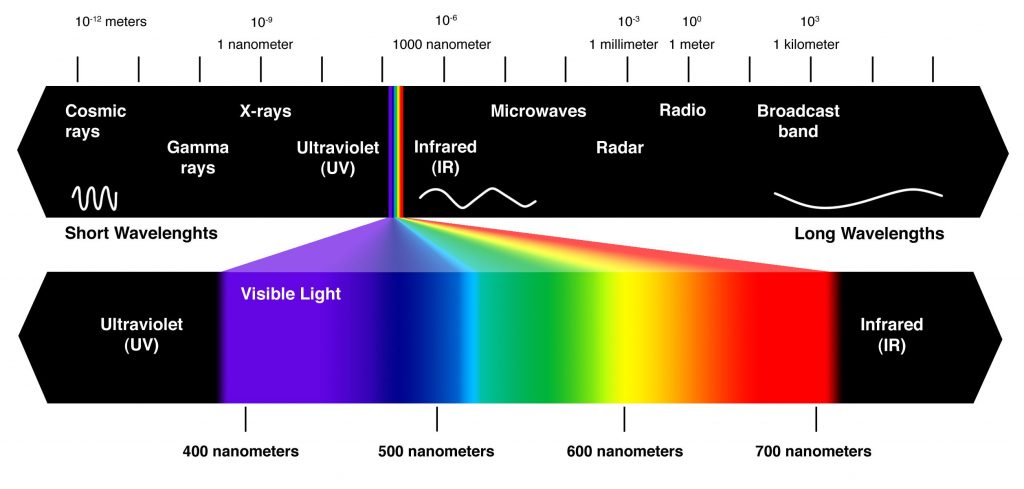
This is an element that simply cannot be overlooked.
Ideally, you’re looking for a “full-spectrum” light – a light that covers the electromagnetic spectrum from infrared to near-ultraviolet.
In the lighting world, the term “full-spectrum” tends to be more of a marketing tool than anything else. That being said, it gives you a much clearer idea of a light’s wavelengths.
Output Relative To Input
To put it simply, you’re looking for a high output of light along with a low input of electricity.
Build Quality/Durability
Grow lights can be a rather pricey investment and you’ll want to know that your investment will last. That’s why quality build materials are so important – they increase durability.
There’s no way around saying this next part – we suggest that you purchase lights that are made in the U.S. (if possible).
Programmable Versatility
Most grow lights come with similar features, but some offer more than others.
Try to purchase a 1000W LED grow light that gives you programmable options so that you can do things like:
- Set time schedules
- Adjust light intensity
- Adjust the light spectrum
Thermal Management
While LEDs don’t give off as much heat as say, an HPS light, they give off heat all the same
A big part of determining your 1000 watt LED grow light’s quality is how it handles heat.
Why is this important? Well, good thermal management increases the longevity of your light and protects your plants from excess heat.
A quality LED light makes use of heat sinks with fins to pull away and store the heat that it produces.
Cost
Research, that’s the name of the game here.
Be a discerning consumer – brands like to prey on the ignorance of people with false claims and fancy marketing terminology.
On the one hand, you don’t want to spend a good chunk of your hard-earned cash on a product with an inflated price tag. On the other, you don’t want to go the cheap route, only to end up with a poor product.
What you want is “bang for your buck”.
Light Coverage
You’ll recall us talking about light spread in one of our previous sections – “How Much Area Does A 1000 Watt LED Grow Light Cover?”
We cannot overstate the importance of this factor. Honestly speaking, there is very little point in you investing in a 1000 watt LED grow light if it doesn’t provide you with quality light coverage.
A fixture that’s only capable of focusing its light towards a small section of your grow area is pointless. What you’re looking for is an even distribution of light across.
Choose brands that provide you with this sort of information in a transparent, realistic manner.
Warranty & Return Policy
A warranty and return policy tell you a lot about the level of confidence that a company has in its product. Companies may claim that their product is durable, but do they back it up?
A solid warranty and return policy should have the following characteristics
- Be for as long as possible.
- It must be comprehensive.
- Transparency.
- Free return shipment policy.
- It should come with quality customer service.
Brand Reputation
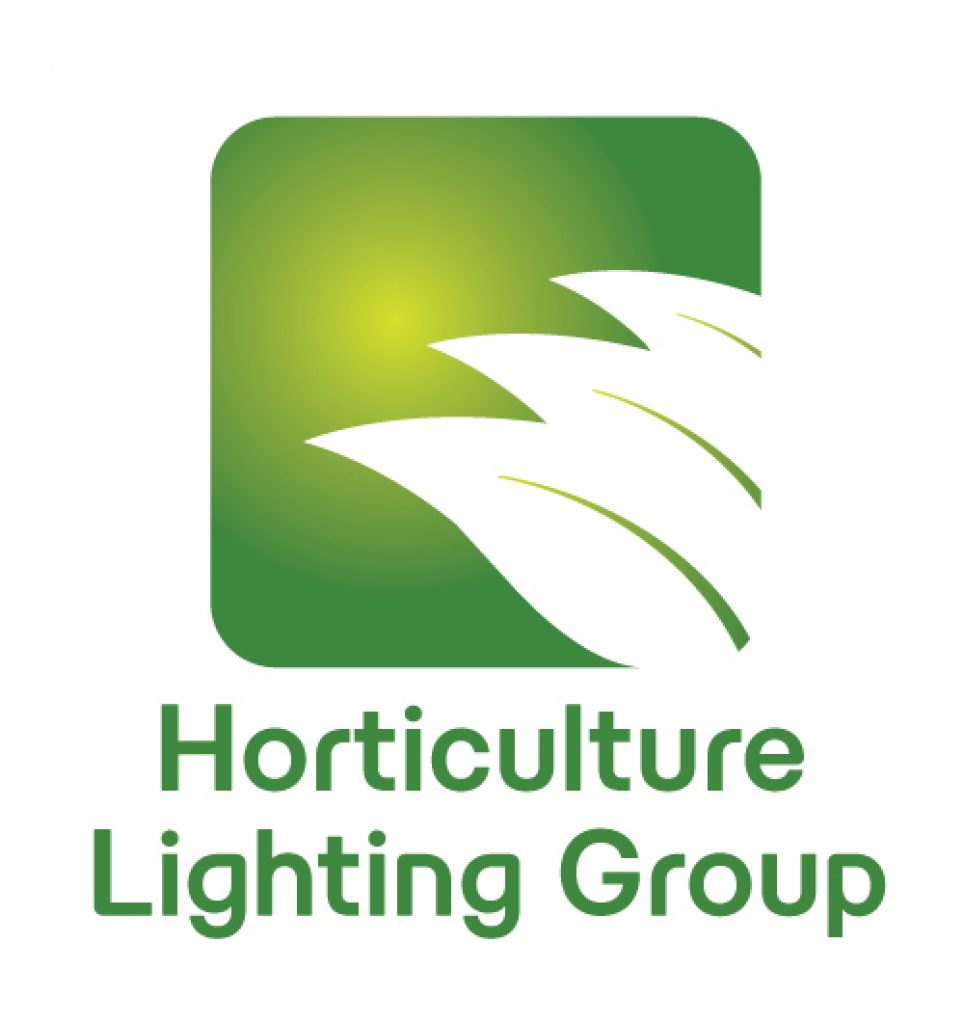
Sure, brand names aren’t always everything, but they can be synonymous with quality or untrustworthy behavior.
You may have noticed the word “claim” popping up a fair bit in the previous subsections. A lot of companies/brands out there love to make claims that they don’t quite back up. This creates a lot of distrust.
So, when you’re looking for a brand with the best 1000 watt LED grow light out there, ask yourself the following questions:
- What is the reputation of the brand in question?
- Are they trustworthy?
- Do they make false claims and inflate the specs of their products?
- Do they provide incentives for good reviews, or to take bad ones down?
- What is their customer service like?
Final Thoughts
You’re probably feeling a little drained after absorbing all of that information – trust us, we understand!
It’s a fair bit to take in, but for good reason. Grow lighting isn’t as simple as some make it out to be, especially when it comes to companies and their advertising.
Whether you’re in the market for a 1000 watt LED grow light – or any grow light for that matter – it’s important that you’re equipped with as much information as possible.
So on that note, we hope that this article has served its purpose – you can now go about purchasing your grow light with a much more informed opinion.

